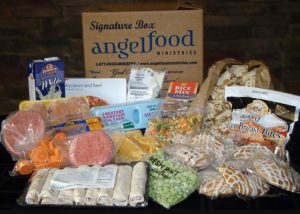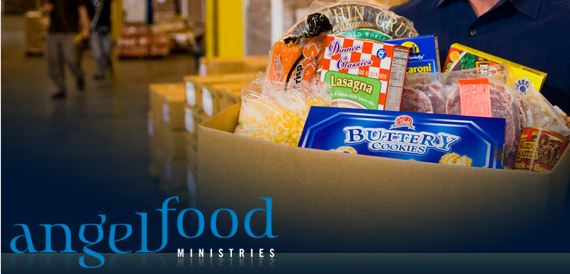Are you needing food assistance but looking for angel food ministry alternatives? Various programs can provide similar benefits and serve as an angel food ministries replacement, whether it’s due to location, availability, or personal preference. In this blog post, we’ll explore some options for those seeking alternative food assistance programs and how to locate and participate in them. So, let’s dive in and discover the many options available as a replacement for Angel Food Ministries, ensuring you can access the support you need.
Alternatives to Angel Food Ministries
Contents
Several other food assistance programs are available as angel food ministries replacement. One notable option is Feeding America, a nationwide network of food banks that provides free meals and grocery items to those in need. Another alternative is the USDA’s Supplemental Nutrition Assistance Program (SNAP), which offers funds for purchasing groceries at participating retailers.
 Local community organizations such as churches or non-profits may offer food assistance programs. For example, some churches have food pantries or soup kitchens where individuals can receive prepared meals or pick up bags of groceries.
Local community organizations such as churches or non-profits may offer food assistance programs. For example, some churches have food pantries or soup kitchens where individuals can receive prepared meals or pick up bags of groceries.
Another potential resource for finding alternative options is 211.org, a national health and human services directory that includes information on local food banks and meal delivery programs. Additionally, many states have their websites with listings of available resources for those needing help obtaining nutritious food.
It’s worth noting that while these alternative programs may not be identical to angel food ministry replacement, they still provide vital support to families facing hunger and financial hardship. So if you’re seeking assistance feeding yourself or your family, don’t hesitate to explore these options!
Programs like Angel Food Ministries Near Me
If you are looking for alternative food assistance programs similar to Angel Food Ministries, various options are available near your location. These programs work towards providing meals and groceries to individuals and families who may be struggling financially.
One such program is Feeding America which has a network of over 200 food banks across the United States. They collaborate with local charities, pantries, and soup kitchens to provide nutritious meals to needy people.
Another option is The Emergency Food Assistance Program (TEFAP) which operates through partnerships between the government and non-profit organizations. This program provides emergency food assistance to low-income Americans, including seniors, children, and families.
You can also consider contacting your local churches, which often have a food pantry or meal distribution program for needy community members. Additionally, some cities offer farmer’s markets that accept EBT (Electronic Benefits Transfer) cards where you can purchase fresh produce at an affordable price.
Utilizing these alternative food assistance programs near you can ensure that you or your loved ones can access healthy meals without worrying about financial constraints.
Benefits of Alternative Food Assistance Programs
Alternative food assistance programs offer a variety of benefits for individuals and families in need. One benefit is the ability to choose from a broader range of options compared to traditional food banks or pantries. These alternatives often provide fresh produce, dairy products, and even meat unavailable from other sources.
 Another advantage is the flexibility these programs offer regarding eligibility requirements and access points. Unlike some government-run assistance programs that have strict income limits or residency restrictions, alternative food assistance programs may be more inclusive and accessible to those who don’t qualify for other forms of aid.
Another advantage is the flexibility these programs offer regarding eligibility requirements and access points. Unlike some government-run assistance programs that have strict income limits or residency restrictions, alternative food assistance programs may be more inclusive and accessible to those who don’t qualify for other forms of aid.
Moreover, participating in these types of initiatives can also promote community engagement as they are often run by local organizations like churches or non-profits. This type of involvement creates volunteer opportunities and fosters relationships between program participants.
Alternative food assistance programs encourage self-sufficiency by providing resources beyond just basic nutrition needs. Some groups offer cooking classes, job training workshops, and financial literacy courses which help recipients develop skills that extend beyond accessing free meals.
There are many reasons why angel food ministry replacement options are worth considering if you’re struggling with hunger insecurity.
Resources for Finding Alternative Food Assistance Programs
If you need food assistance and want to explore alternative programs like angel food ministries near me, several resources are available to help you find them.
One option is to contact your local government agency that handles social services. They may have information about food banks, pantries, and other organizations that provide food assistance in your area. You can also check with local churches or community centers, as they often host food drives and may offer assistance programs.
Another resource is the Feeding America website which allows you to search for local food banks by entering your zip code. Additionally, websites like FoodPantries.org and AmpleHarvest.org provide a directory of nearby pantries and gardens where fresh produce is grown specifically for those in need.
It’s important to remember that each program may have different eligibility requirements and distribution schedules. You should call ahead or visit the organization’s website for more information before visiting.
Utilizing these resources allows you to access alternative food assistance programs near you without relying solely on angel food ministries alternatives.
How to Participate in Alternative Food Assistance Programs
Participating in alternative food assistance programs is an excellent way to supplement your grocery budget and ensure that you have access to healthy, nutritious meals. Here are some steps you can take to participate in these programs:
 1. Research alternative food assistance programs: Research different local organizations offering food assistance programs. Use online resources or ask for recommendations from friends, family members, or social workers who may be familiar with such services.
1. Research alternative food assistance programs: Research different local organizations offering food assistance programs. Use online resources or ask for recommendations from friends, family members, or social workers who may be familiar with such services.
2. Check eligibility criteria: Once you’ve identified a few potential options, check the eligibility requirements for each program to determine which ones might fit your needs.
3. Apply: Fill out application forms completely and accurately, ensuring all necessary information is provided.
4. Attend orientation sessions: Some alternative food assistance programs require participants to attend orientation sessions before receiving their benefits – make sure you’re aware of any mandatory orientations so as not to miss out on valuable information about the program.
5. Pick up your groceries: After completing the steps above, it’s time to pick them up! Be sure to bring any required documentation when picking up your items.
Participating in alternative food assistance programs helps provide much-needed nutrition and supports local communities and businesses – it’s a win-win situation!
Conclusion
While the closure of angel food ministries alternatives has affected many families and individuals who relied on their services, other alternative food assistance programs are still available. These organizations offer a range of benefits, including affordability, flexibility in meal choices, and accessibility for varying dietary needs.
It’s important to remember that seeking help is not a sign of weakness but rather an intelligent decision to ensure that you and your loved ones have enough nourishment on the table. With resources such as Feeding America’s food bank locator tool or even local community bulletin boards, finding an alternative program that fits your family’s needs can be easier than you think.
